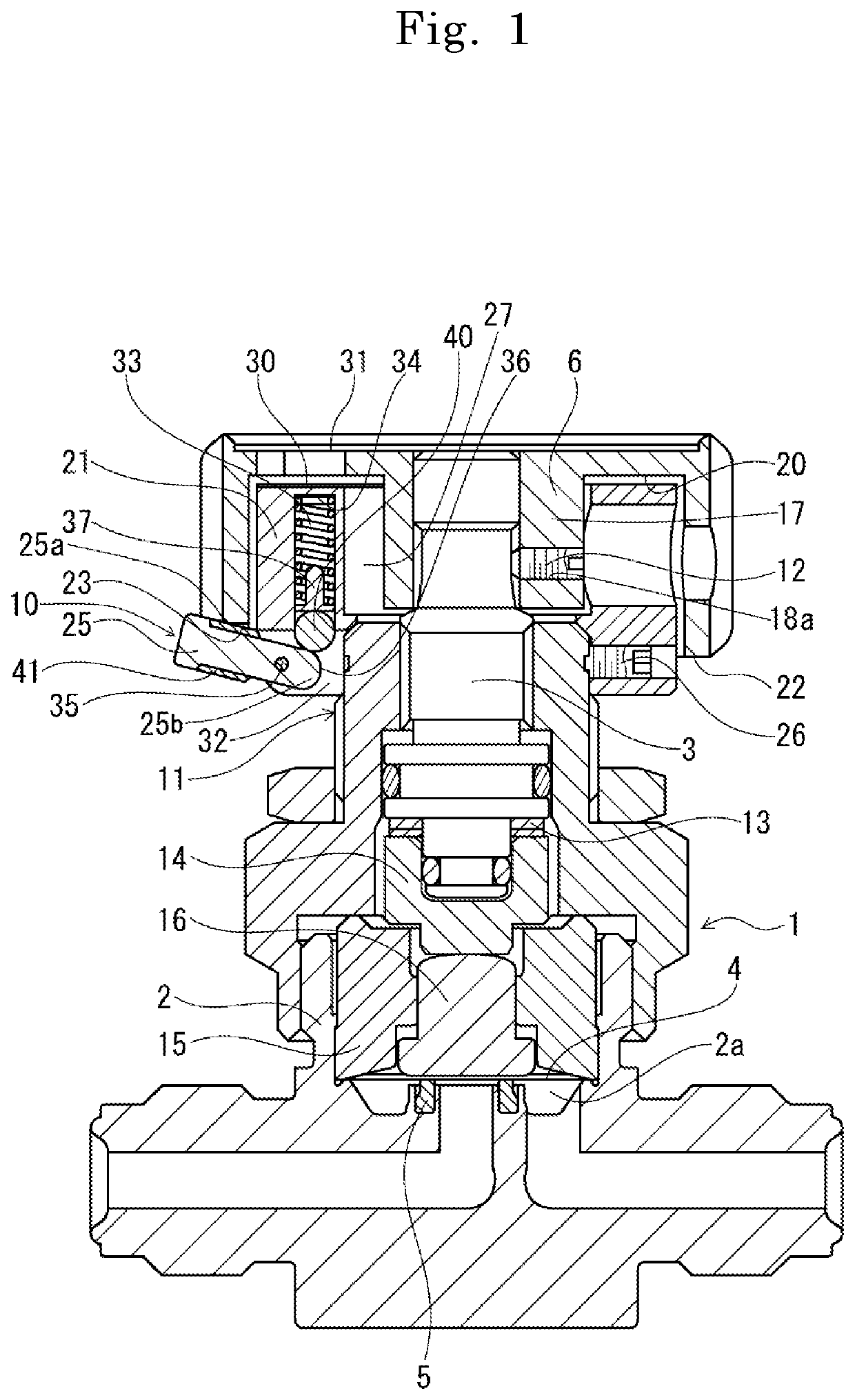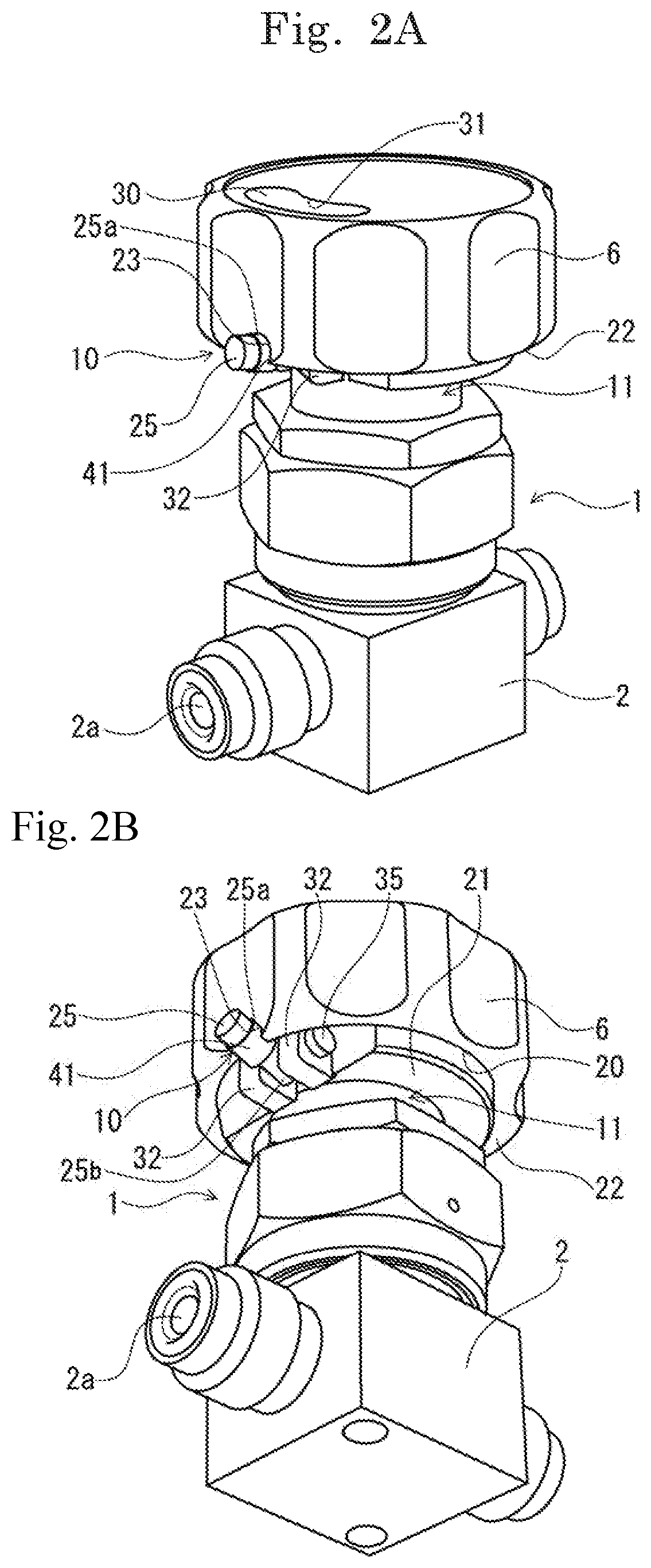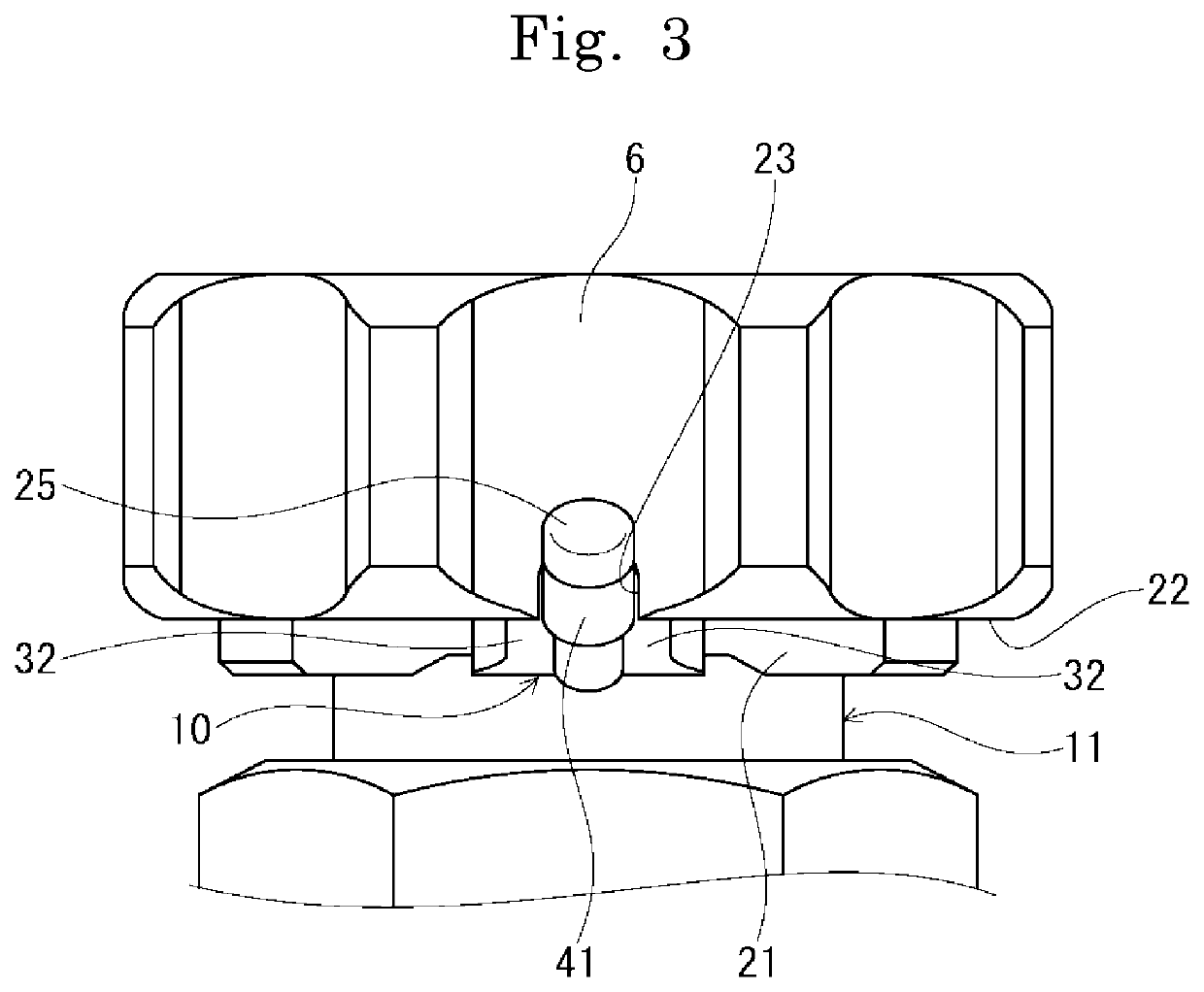One-touch lock valve and raw material container
a technology of one-touch lock valve and raw material container, which is applied in the direction of valve details, valve arrangement, preventing unauthorised/accidental actuation, etc., can solve the problems of process fluid leaked, toxicity and flammability, and often has very hazardous properties of process fluid, etc., to prevent wear and tear, excellent operability, and easy operation
- Summary
- Abstract
- Description
- Claims
- Application Information
AI Technical Summary
Benefits of technology
Problems solved by technology
Method used
Image
Examples
Embodiment Construction
[0043]In the following, embodiments of the one-touch lock valve and the raw material container in the present invention are described in detail based on the drawings. In FIG. 1 and FIG. 3, depicted is a valve-close state of an embodiment of the one-touch lock valve of the present invention. In FIG. 4 and FIG. 5, depicted is a state in which the one-touch lock valve is unlocked.
[0044]In the drawings, a one-touch lock valve (hereinafter referred to as a valve main body 1) has a body 2, a stem 3, a diaphragm 4 as a valve body, a valve seat 5 for sealing, a rotating handle 6, a lock mechanism 10, and a holder 21.
[0045]The valve main body 1 is formed of a diaphragm valve. Inside the body 2 of this valve main body 1, the diaphragm 4 is incorporated. This body 2 is provided with a axial mounting part 11 with the stem 3 axially mounted in a screwed state.
[0046]To an upper part of the stem 3, the rotating handle 6 is integrally attached by spline coupling, and the rotating handle 6 is fasten...
PUM
 Login to View More
Login to View More Abstract
Description
Claims
Application Information
 Login to View More
Login to View More - R&D
- Intellectual Property
- Life Sciences
- Materials
- Tech Scout
- Unparalleled Data Quality
- Higher Quality Content
- 60% Fewer Hallucinations
Browse by: Latest US Patents, China's latest patents, Technical Efficacy Thesaurus, Application Domain, Technology Topic, Popular Technical Reports.
© 2025 PatSnap. All rights reserved.Legal|Privacy policy|Modern Slavery Act Transparency Statement|Sitemap|About US| Contact US: help@patsnap.com



